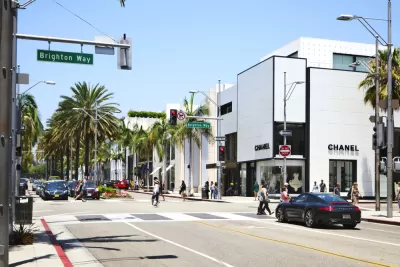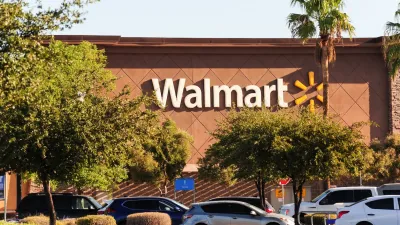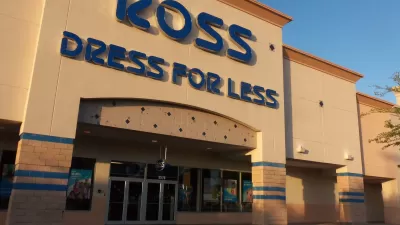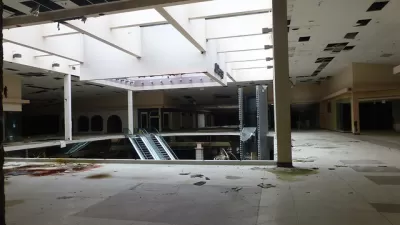Reports of the death of brick and mortar retail have been greatly exaggerated, according to a new analysis.

"Retail is not dead," writes Debra D. Bass. "According to a report by IHF Group, the U.S. gained 4,080 more retail stores than it lost this year."
The report, titled "Debunking the Retail Apocalypse," counters a prevailing narrative about a "retail apocalypse" in the United States due to the growing popularity of e-commerce. (Planetizen readers have proven the popularity of this narrative, as shown in this traffic analysis of the first six months of 2017.)
Yet, there are many still arguing that the future of brick and mortar retail is bright. Writes Bass: "The net increase in jobs, sales and store locations belies the more scintillating 'retail is dead' narrative […] and it considers the report welcome validation. Retail lives."
Bass notes that the National Retail Federation (NRF) has been making the same case, recently bolstered by the IHF report. The NRF has even created a website called "The Future of Retail," which calls the retail apocalypse "fake news." The National Retail Federation has spent the summer collecting news to bolster its claims, including articles in Forbes and USA Today.
For more insight into the IHF report, see also a Retail Dive article written by Daphne Howland.
FULL STORY: Retail Details: Retail disruption not necessarily disastrous

Rethinking Redlining
For decades we have blamed 100-year-old maps for the patterns of spatial racial inequity that persist in American cities today. An esteemed researcher says: we’ve got it all wrong.

Planetizen Federal Action Tracker
A weekly monitor of how Trump’s orders and actions are impacting planners and planning in America.

Walmart Announces Nationwide EV Charging Network
The company plans to install electric car chargers at most of its stores by 2030.

Seattle’s Pike Place Market Leans Into Pedestrian Infrastructure
After decades of debate, the market is testing a car ban in one of its busiest areas and adding walking links to the surrounding neighborhood.

The World’s Longest Light Rail Line is in… Los Angeles?
In a city not known for its public transit, the 48.5-mile A Line is the longest of its kind on the planet.

Quantifying Social Infrastructure
New developments have clear rules for ensuring surrounding roads, water, and sewers can handle new users. Why not do the same for community amenities?
Urban Design for Planners 1: Software Tools
This six-course series explores essential urban design concepts using open source software and equips planners with the tools they need to participate fully in the urban design process.
Planning for Universal Design
Learn the tools for implementing Universal Design in planning regulations.
City of Moorpark
City of Tustin
City of Camden Redevelopment Agency
City of Astoria
Transportation Research & Education Center (TREC) at Portland State University
Regional Transportation Commission of Southern Nevada
Toledo-Lucas County Plan Commissions





























